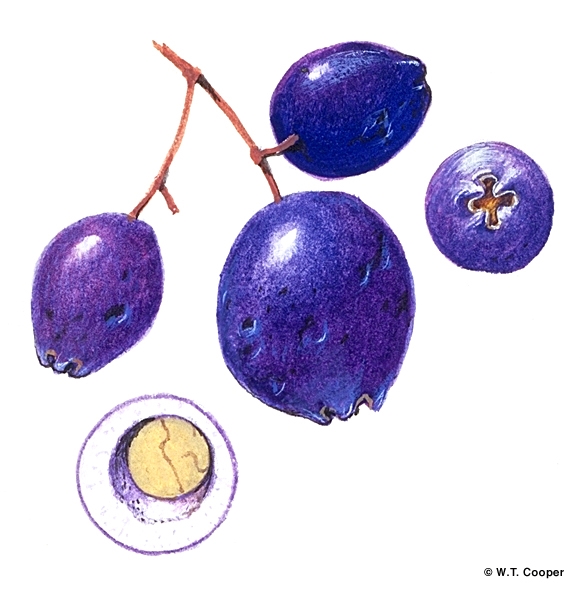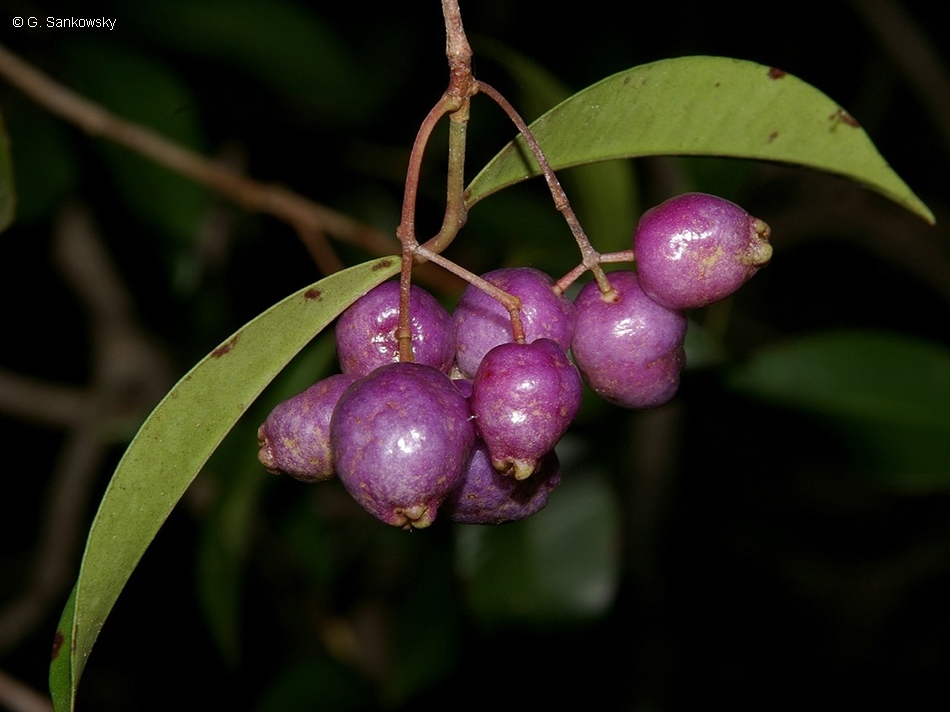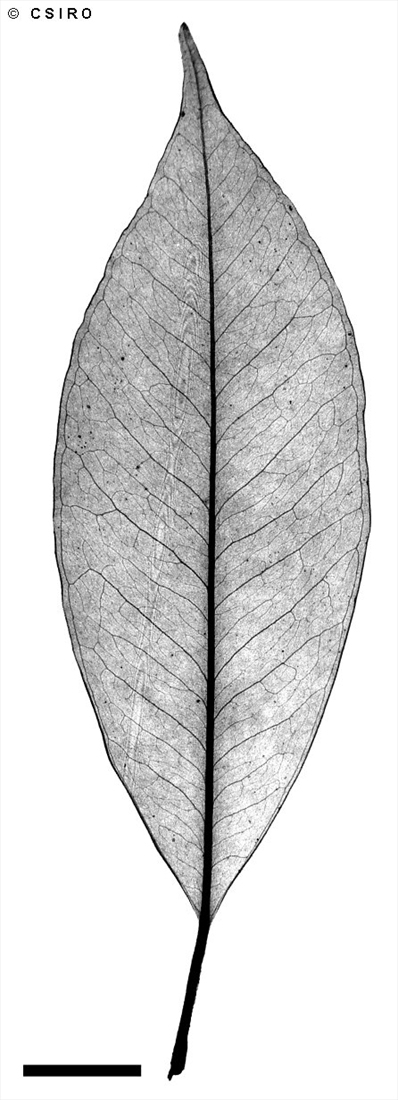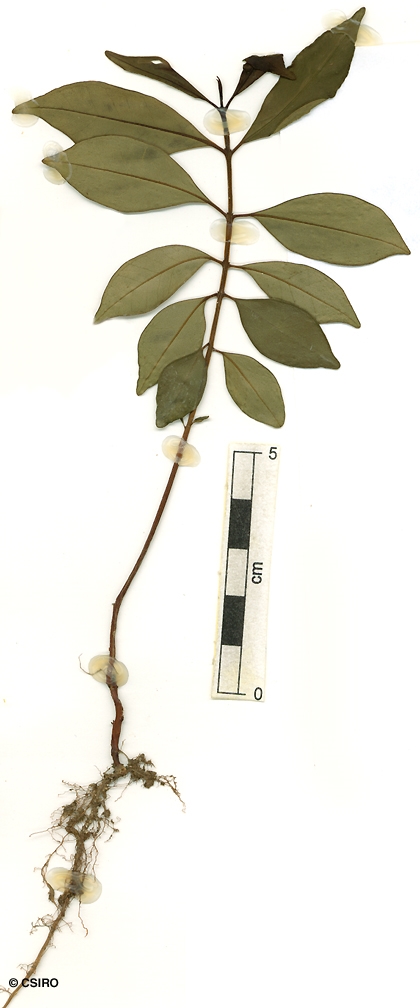Australian Tropical Rainforest Plants - Online edition
Syzygium oleosum (F.Muell.) B.Hyland






Hyland, B.P.M. (1983) Australian Journal of Botany Supplementary Series 9: 107.
Satinash, Scented; Watergum; Coastal Cherry; Oily Satinash; Cherry, Coastal; Cherry, Blue; Blue Lilly Pilly; Blue Lillipilli; Scented Satinash; Blue Cherry
Seldom exceeding 30 cm dbh.
Leaf blades about 3-11 x 1-3.5 cm, petioles about 0.2-1 cm long. Numerous oil dots readily visible to the naked eye. Midrib depressed on the upper surface and petiole grooved on the upper surface. Lateral veins scarcely visible on the upper surface. Leaves very aromatic when crushed, often resembling the odour of crushed pepperina (Schinus molle) leaves.
Inflorescence in the upper axils but never truly terminal, bracts deciduous, absent at anthesis. Calyx tube (hypanthium) + pedicel about 3-6 mm long, calyx tube (hypanthium) about 2-4.5 mm diam., calyx lobes concave, rounded to +/- triangular, about 1-2 mm long, horizontal or reflexed at anthesis. Petals +/- orbicular or oval, concave, about 2.3-3.5 mm diam., oil dots visible, about 20-80 per petal. Outer staminal filaments about 6-18 mm long, anthers about 0.5-0.6 x 0.4-0.5 mm, gland terminal, near the back of the anther. Ovules about 5-12 per locule, placentas central, ovules radiating, ascending. Style about 8-22 mm long, approximating the stamens.
Fruit variable in colour and shape, globular to ovoid, attaining about 9-20 x 10-16 mm, excavated at the apex, calyx lobes persistent, fleshy, about 2-3 mm long, pericarp succulent. Seed solitary, about 5-9 mm diam., testa adhering slightly to the pericarp but free from the uniformly textured cotyledons. Radicle basal or lateral, cotyledonary stipules present.
Endemic to Australia, occurs in NEQ, CEQ and southwards as far as coastal central New South Wales. Altitudinal range in NEQ from sea level to 1200 m but tending to be more common at higher elevations. Grows as an understory tree in rain forest but is more frequently found in wet sclerophyll forest near rain forest margins or in sheltered situations in eucalypt forest.
A commonly cultivated bushy shrub. Fruits are blue and quite food to eat.
This species has no commercial value as it seldom grows large enough to produce millable logs. Wood specific gravity 0.85. Hyland (1983).





